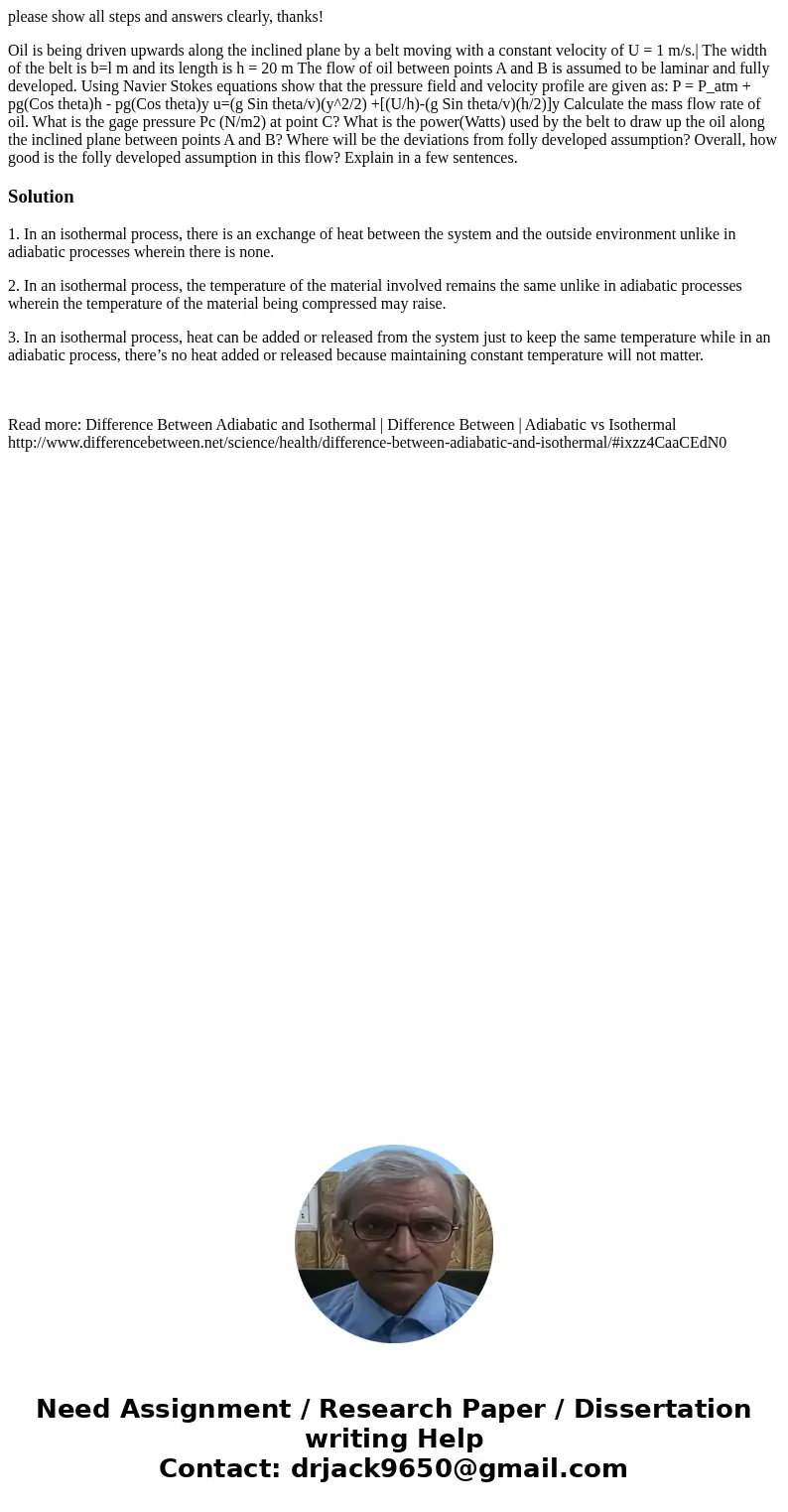please show all steps and answers clearly thanks Oil is bein
please show all steps and answers clearly, thanks!
Oil is being driven upwards along the inclined plane by a belt moving with a constant velocity of U = 1 m/s.| The width of the belt is b=l m and its length is h = 20 m The flow of oil between points A and B is assumed to be laminar and fully developed. Using Navier Stokes equations show that the pressure field and velocity profile are given as: P = P_atm + pg(Cos theta)h - pg(Cos theta)y u=(g Sin theta/v)(y^2/2) +[(U/h)-(g Sin theta/v)(h/2)]y Calculate the mass flow rate of oil. What is the gage pressure Pc (N/m2) at point C? What is the power(Watts) used by the belt to draw up the oil along the inclined plane between points A and B? Where will be the deviations from folly developed assumption? Overall, how good is the folly developed assumption in this flow? Explain in a few sentences.Solution
1. In an isothermal process, there is an exchange of heat between the system and the outside environment unlike in adiabatic processes wherein there is none.
2. In an isothermal process, the temperature of the material involved remains the same unlike in adiabatic processes wherein the temperature of the material being compressed may raise.
3. In an isothermal process, heat can be added or released from the system just to keep the same temperature while in an adiabatic process, there’s no heat added or released because maintaining constant temperature will not matter.
Read more: Difference Between Adiabatic and Isothermal | Difference Between | Adiabatic vs Isothermal http://www.differencebetween.net/science/health/difference-between-adiabatic-and-isothermal/#ixzz4CaaCEdN0

 Homework Sourse
Homework Sourse